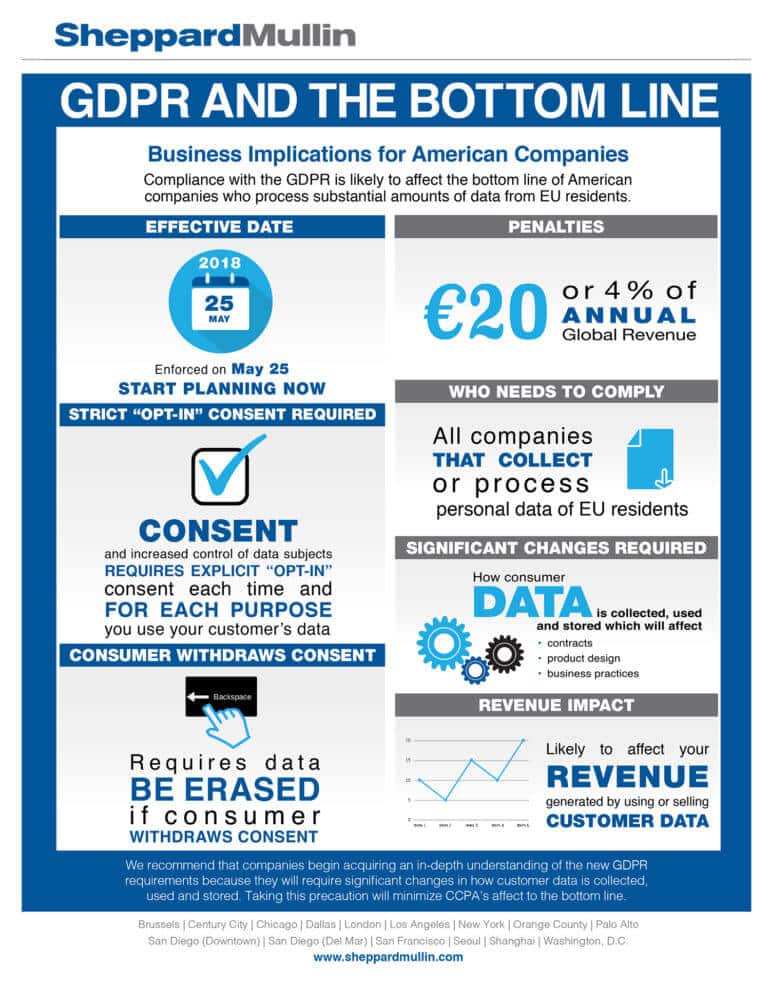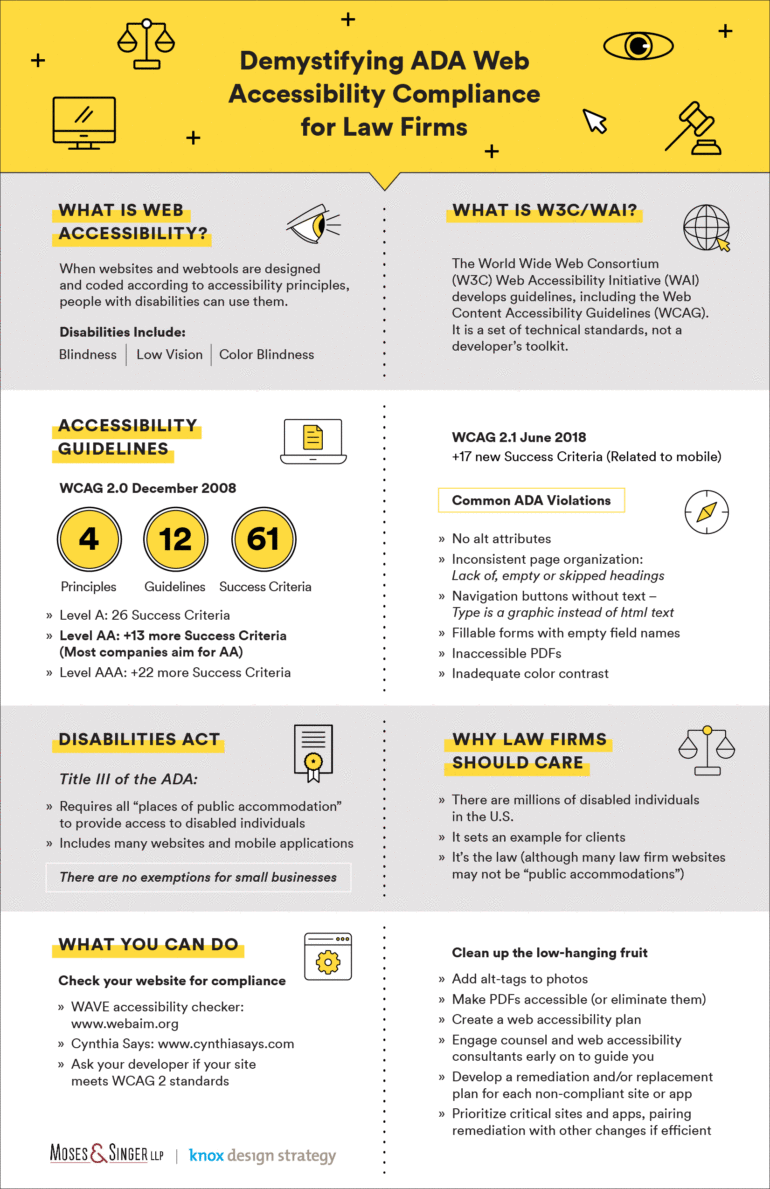Infographics offer a number of benefits. Most notably, though, they let readers take in a lot of information quickly. Adding eye-catching infographics to your marketing can help you communicate difficult concepts more clearly, ditch the dry legalese, and capture the interest of clients and prospective clients.
Why Are Infographics So Effective?
Research from Neomam found that 50% of our brains are involved in visual processing, engaging us far more than the written word alone. It takes less than a 10th of a second to get a sense for a visual scene. Perhaps most important, visual content helps fight information overload.
In addition, visuals can encourage audiences to tap into certain emotions or take specific actions. A study at the Wharton School of Business discovered that 50% of the audience were persuaded by a purely verbal presentation, while 67% were persuaded when visuals were included. User-friendly infographics are also highly shareable on social media and promote more engagement than posts without visual content.
Types of Infographics
Infographics can take many forms, and will largely depend on the information you want to communicate. Here’s a breakdown of the most common infographics used by law firms.
Statistical Infographics
Statistical infographics are used to increase comprehension, especially when working with a large amount of data. They turn big concepts into bite-sized pieces of information, using color, images and other elements to grab attention and turn vague concepts into relatable information.
Allen Matkins took the visual route when it came time to produce an annual update on the firm’s pro bono work. Given the recent increase in the number of asylum seekers in the U.S., the California-based law firm, partnering with Human Rights First, enlisted Yerkey Design to create the following “Recent Trends in Asylum” infographic.
The data takes the form of simple charts, maps and diagrams, while a limited color palette ties it all together. Breaking down numerical data into snippets allows readers to easily scan and comprehend the information on asylum seekers needing legal assistance.
In addition to serving as the basis for reporting to clients on the firm’s pro bono efforts, the infographic was posted on social media and the firm’s website. In the past, the marketing team typically relied on video. Since this particular subject matter did not lend itself as easily to video, an infographic was the perfect solution.
The following example from Harvard Law School, designed by Column Five Media, provides a clear overview and statistical breakdown of the law school, from faculty-student ratios to extracurricular activities to the global reach of the school’s clinical program. Something similar would work for a law firm “About Us” page or annual report.
Informational Infographics
Like statistical infographics, informational infographics follow a similar approach in turning vague data into vibrant content. Instead of locking disparate data points into a narrative or spreadsheet, these infographics focus on concepts, such as a process or hierarchy. The most common formats are flowcharts, timelines and organizational diagrams.
Editorial Infographics
Editorial infographics are what most people think of when they hear the word “infographic.” An image-rich infographic can provide your readers with an overview of a complex topic, while a supporting article can go deeper, providing necessary details.
For example, Sheppard Mullin featured the following infographic in a blog post titled The GDPR and the Bottom Line. The infographic breaks down the complex requirements of the European Union’s General Data Protection Regulation. Reading through paragraphs of GDPR requirements might be quite boring (and difficult to grasp), but this infographic makes the general concepts easier to digest.
The Sheppard Mullin marketing team had conducted research that suggested using more infographics would increase the success rates of their overall digital media strategy.
In another example, my firm recently collaborated with Moses & Singer to design an infographic to explain web accessibility requirements for law firms. With lawsuits filed against noncompliant websites becoming more frequent, the Legal Marketing Association felt it was important to educate marketers. The LMA asked lawyer Gregory Shatan to explain what accessibility is and what it means for law firm websites. The highly technical information was delivered in a PowerPoint presentation over the course of an hour. The infographic breaks down the content into an easily digestible format, with a clear flow of information and icons that support the most important elements. Both Knox Design Strategy and Moses & Singer posted the infographic on our websites and shared through social media.
What’s the Best Content for Law Firm Infographics?
Legal statistics, survey results, trend data and predictions are excellent sources for infographics. Go back to existing blog posts, articles or recent speeches for nuggets that can become infographics. Use them either to support the original content or as a stand-alone marketing tool. Add infographics to presentations, RFPs, advertisements and media pitches. Remember to include your law firm logo and contact information so there’s no question who created it.
Infographics that break down complex topics help bridge the communication barriers between clients and lawyers, leading to more educated clients and a stronger attorney-client relationship. From that standpoint, they are not just a marketing advantage, but another way to deliver legal services and information.
You Might Also Like:
“How to Create Impressive Infographics for Your Law Firm” by Lynn Luong
“Tips for Creatively Repurposing Your Writing” by Ari Kaplan
“Five Creative Ways Lawyers Can Use Experiential Marketing” by Sally Kane




















